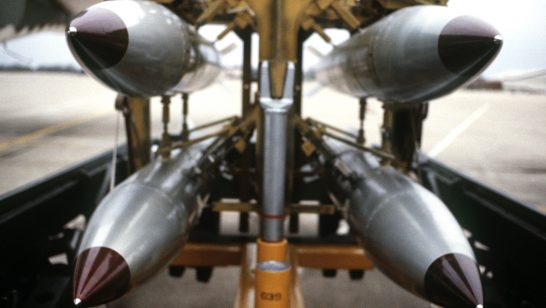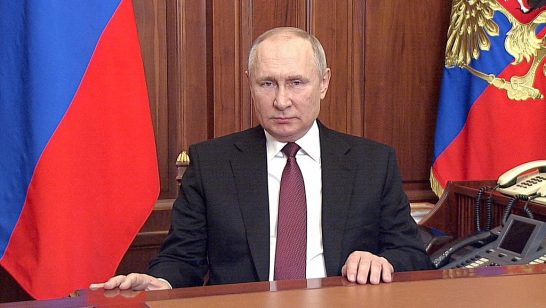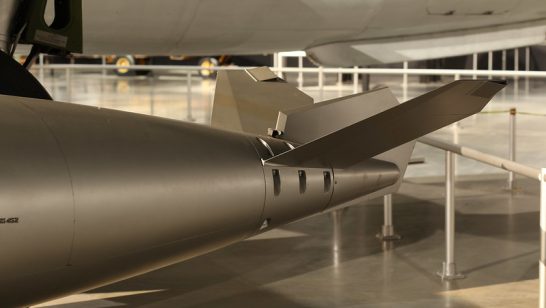
The United States and Russia made little to no progress on Strategic Arms Control in 2019. On the contrary, there were troubling signs of erosion of both bilateral and multilateral agreements in this area. Moreover, the negative trend looks set to continue. In August the US withdrew from the Intermediate-Range Nuclear Forces Treaty (INF) Treaty after claiming repeated Russian violations while predictably, Russia claimed the same and similarly withdrew. In 2020, the US has already indicated that it will also reassess its engagement with the Open Skies Treaty (OST). For now, only strategic arms control remains.
New START – Where does it stand?
The New START treaty entered into force on 5th February 2011 and has limited the US and Russia’s deployment of nuclear warheads (to 1,550), intercontinental ballistic missiles (ICBMs) (to 700), submarine-launched ballistic missiles (SLBMs), and heavy bombers, and also includes verification mechanisms. Although the treaty expires on 4th February 2021, the agreement can be extended for five more years. While Russia has stated its willingness to extend, the US has not. Not only would an extension provide some stability and global security predictability, it would also maintain an effective strategic nuclear deterrent. Moreover, New START gives the US insight into Russian strategic forces that it likely would not get without it.
Despite these arguments in favour, the US has insisted that China be involved in future arms control agreements, despite the fact that their nuclear stockpile is only a fifth the size of that of the US and Russia. Other arguments against renewing New START also exist such as its inability to cover new weapons, particularly more “exotic” hypersonic weaponry. However, by extending New START, both the US and Russia will have an additional five years to build in provisions for these weapons and develop an approach for non-strategic nuclear weapons as a successor for new arms control.
New START – What negotiations are necessary?
What makes New START so crucial to both Russian and the Wests’ interests is that it plays into a cohesive vision of effective arms control. This vision includes strategic stability, equal security, and commensurate limitations on weapons. New START allows Russia and the US to maintain parity and gives neither side the incentive to initiate a nuclear first strike. However, this does not imply that further negotiations aren’t still needed to update the treaty.
To handle some of the concerns regarding new weaponry, Russia seeks to add newly developed kinds of weapons to future arms control agreements. While the original Strategic Arms Limitation Talks (SALT), which took place in the 1970s, included intercontinental ballistic missiles (ICBMs), submarine-launched ballistic missiles (SLBMs), and heavy bombers – both the US and Russia have since developed many newer forms of weaponry. In particular, Russia wants to add ballistic missile defences (BMD) and non-nuclear offensive weapons to future arms control agreements. Given the US withdrawal from the Anti-Ballistic Missile Treaty in 2002, this point is of particular importance to Russian negotiators.
How to move forward without New START
While the best-case scenario for arms control in 2020 would be the extension of the New START treaty, a world without it is also possible. Russia’s newly developed weapons offer another way forward. The hypersonic vehicle Avangard and heavy ICBM RS-28 Sarmat currently fall under New START limitations. However, the nuclear-powered cruise missile Burevestnik and the intercontinental nuclear undersea autonomous torpedo Poseidon do not, and are expected to be operational by 2026 at the earliest. These new weapons may help to preserve nuclear parity without New START at least temporarily.
A world without New START would likely incite a nuclear and non-nuclear weapons race between the US and Russia. However, in the interim, Russia’s newly developed weapons may help to contain immediate cessation of hostilities between the two countries – giving them time to work on a new treaty that would hopefully replace New START. Further, with more “exotic” weapons being developed by both the US, Russia, and other countries around the world, it is in the interest of these countries to limit their adversaries’ development or at the very least develop transparency mechanisms.
Or… will Trump extend New START?
Despite the many arguments and lobbying efforts in favour of extending New START, its fate still remains uncertain. There is every chance that the treaty will not be extended. The recent upheaval around the world surrounding the coronavirus and its economic blowbacks on society have taken up governments’ attention for the time being. That said, New START’s collapse would lead to even higher levels of uncertainty and unpredictability – two factors that will cause hugely negative trends in the global market. US President Trump, who will be up for re-election in November 2020, sees his electability and favourability as largely dependent on how the global market performs. It is in his interest to favourably engage with Russia to provide either a distraction from poor handling of the coronavirus pandemic in the US or give himself good press in the upcoming weeks and months before the US presidential election.
The opinions articulated above represent the views of the author(s) and do not necessarily reflect the position of the European Leadership Network or any of its members. The ELN’s aim is to encourage debates that will help develop Europe’s capacity to address the pressing foreign, defence, and security policy challenges of our time.
Image: Wikimedia commons



